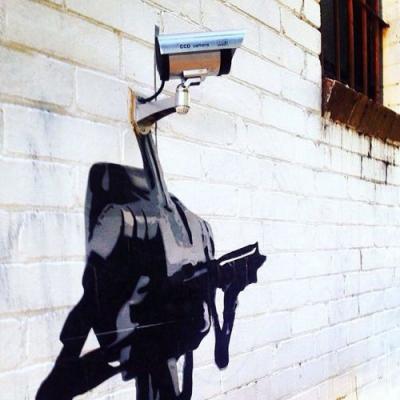
The Rationale
The National Crime Records Bureau data reveals that clashes between prisoners and staff are a recurrent feature of correctional administration in India. In 2015, the Supreme Court conceived CCTV surveillance inside prisons as an antidote to this problem. It opined that CCTV surveillance would foster ‘accountability and transparency’ in prison administration and would act as deterrence against custodial violence. However, the court limited its normative reasoning to the “camera shall see”. It ignored questions of criminological relevance such as “who should be watched”, “who should be watching”, “how should the ‘watching’ be regulated”, and “how is the ‘watched’ knowledge operationalised in penal governance”. In this article, I use the criminological lens to show how the court’s prison reforms discourse through the present policy can become counter-productive by generating new forms of violence and vulnerabilities in penal governance.
While theorising ‘discipline,’ Foucault showed how discourse on prison reforms is used to further legitimise the penitentiary. Criminologists like Carlen, Armstrong, and Feeley, further developed this idea to argue that ‘human rights’ discourse co-opted by the state further bureaucratises prison governance, extends penal control, and generates new forms of literal and symbolic control. Human rights violations are seen as the failure of existing policies and are responded with ‘new reforms’ as the only solution, while the structural issues causing violations are ignored. Drawing on insights from this criminological body of literature, I suggest that the Supreme Court’s decision to respond to prisoner-staff violence with CCTV surveillance further bureaucratizes penal governance through inadequately thought-out reform.
Who Is Being Watched
The court did not classify which spaces within the prison should and should not be covered by CCTV surveillance. Their directions also ignore the issues of collection, regulation, and protection of data captured through such surveillance. In so doing, they gave wide powers to the state governments to decide the geography of surveillance within prisons. In the trade-off of privacy for security, the demand for transparency, is disproportionately borne by the prisoners. For instance, my Right to Information application to the Delhi government reveals that while the CCTV surveillance is extended to barracks and cells where prisoners live, it still doesn’t cover the offices of prison officials.
The court’s turn to CCTV surveillance as a means of reforming prison also fails to acknowledge the gendered nature of penal power and the adverse implications it can have on the carceral experience of women. Feminist criminology argues that women prisoners are often “correctional afterthoughts” in penal policymaking. However, the present policy is extended to women's prisons without factoring in the unique harms it can cause to incarcerated women. This issue became apparent in Mumbai’s Byculla prison, where women complained of male officers using ‘lewd remarks’ based on what they saw on CCTV monitors throughout the day. They felt “sexually objectified”, “perpetually controlled”, and scared to wear minimum clothing even during the scorching summer heat and inadequate cooling facilities. This forced them to go on a hunger strike demanding removal of CCTV cameras from barracks and cells. While the demand was eventually met, the prison superintendent had earlier resisted the same by saying that “under the law, he has the full right to decide where to install the camera.”
Who Is Watching and Why
The court’s directions are also silent on who should operate and regulate the CCTV surveillance, and for what purposes the recorded data should be operationalised. This not only provides unguided discretion to the prison administration but can also be counter-productive to the underpinning goal of human rights.
My interviews with law officers and prisoners who went through the premature release process in Delhi’s Tihar prison reveal that CCTV footage is used for “character assessment” of prisoners eligible for release. Officers making the prisoner dossier or “commutation roll” have unguided and unilateral power to interpret and present observations made through CCTV footage as they desire. As prisoners are not entitled to an oral hearing before the Sentence Review Board, the prison staff wield considerable influence. Prisoners are not even made aware of whether and how the CCTC footage contributed to their character assessment. This aggravates what Ben Crewe described as “tightness” of punishment – exercise of penal power that “wrap prisoners up, smother them and incite them to conduct themselves in particular ways.”
The implications of selective and unregulated CCTV cameras in prison is also evident in the handling of a problem it was intended to resolve – prisoner-staff violence. The latest crime data show that the complaints of both prisoner-staff clashes, and custodial violence, have increased since the court’s directions in 2015. Moreover, prison departments have often evaded producing CCTV footage before court in cases concerning custodial violence by giving excuses such as “malfunction of cameras”, “inadvertent deletion of footage”, “footage not retained”. Media reports have also recorded doctoring of CCTV footage, or denial of footage to families seeking justice for custodial violence.
Conclusion: Perpetuating Penal Power
The early trends of operationalising the policy of installing CCTV cameras in prison shows how the prison reforms discourse can aggravate instead of curbing carceral pains and violence in penal governance. The ambiguous and insufficient nature of the policy gives unguided discretion to the prison administration, which can tighten the grip of arbitrary penal power instead of fostering transparency and accountability. Therefore, the contemporary prison reforms discourse in India often ends up creating a scaffolding of rule of law to mask deeper structures of arbitrary and coercive penal governance. Any rights-based effort to address penal governance must confront this criminological understanding.
Share:
